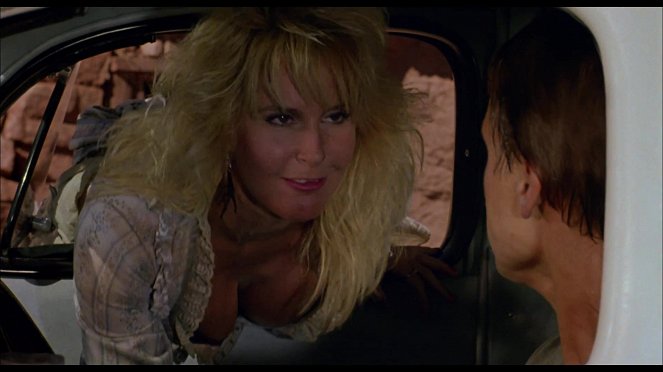Ohjaus:
Ate de JongKäsikirjoitus:
Brian HelgelandKuvaus:
Robin VidgeonNäyttelijät:
Patrick Bergin, Adam Storke, Chad Lowe, Kristy Swanson, Pamela Gidley, Jarrett Lennon, C.J. Graham, Richard Farnsworth, Gilbert Gottfried, Anne Meara (lisää)Arvostelut (2)
The ultimate B-movie trash. Just like I hate it.
()
Highway to Hell threads the needle between Albert Pyun’s scenographically imposing trash (Radioactive Dreams, Cyborg, Alien from L.A.) and Gregory Widen’s weirdly mythological genre flicks (Highlander, Prophecy), while remaining proudly in the realm of VHS trash. Besides a tremendous number of genre-pure flicks, the golden era of video rental shops gave rise to an odd subset of incomprehensibly bizarre films that brought to mind the genre equivalent of a Rube Goldberg machine. With zero judgment but grandiose creativity, they blended genre elements with flashy sets, and episodic narratives served as a field of unrestrained goofing off for the artisans in the costume and set design departments. We can find the portents of this trend as far back as the mid-1980s in isolated works such as the aforementioned low-budget Radioactive Dreams and the studio-financed Streets of Fire. But they absolutely blew up with likably overwrought movies like Cherry 2000, Rising Storm (1990), Mindwarp (1992), Split Second (1992) and Richard Stanley’s films. All of these flicks are united by the principle of belching out fragmentary elements using the scattershot method, where the resulting work only rarely holds together, firing various genre and formalistic attractions at viewers instead of relying on sophistication. At that time, precisely these kinds of films were highlighted by enthusiast magazines such as Fangoria, whose passionate writers and readers, who’d had enough of worn-out genre clichés, latched onto either explicit extremes or movies with the promise of an original take on genre elements and at least a basic amount of video-rental teen attractions with special effects and action sequences at the fore. Highway to Hell mixes elements of the Persephone myth with the aesthetics of westerns, rockabilly, horror and biker exploitation. Set in the desert and with the help of painted optical effects, the film’s version of hell takes the form of a masquerade ball, where phenomena such as the protagonist’s dog provocatively urinating in front of stop-motion Kerber and Gilbert Gottfried’s Hitler chatting with Ben Stiller’s Attila, the Scourge of God do not in any way stand out from the general coke-fuelled randomness.
()

